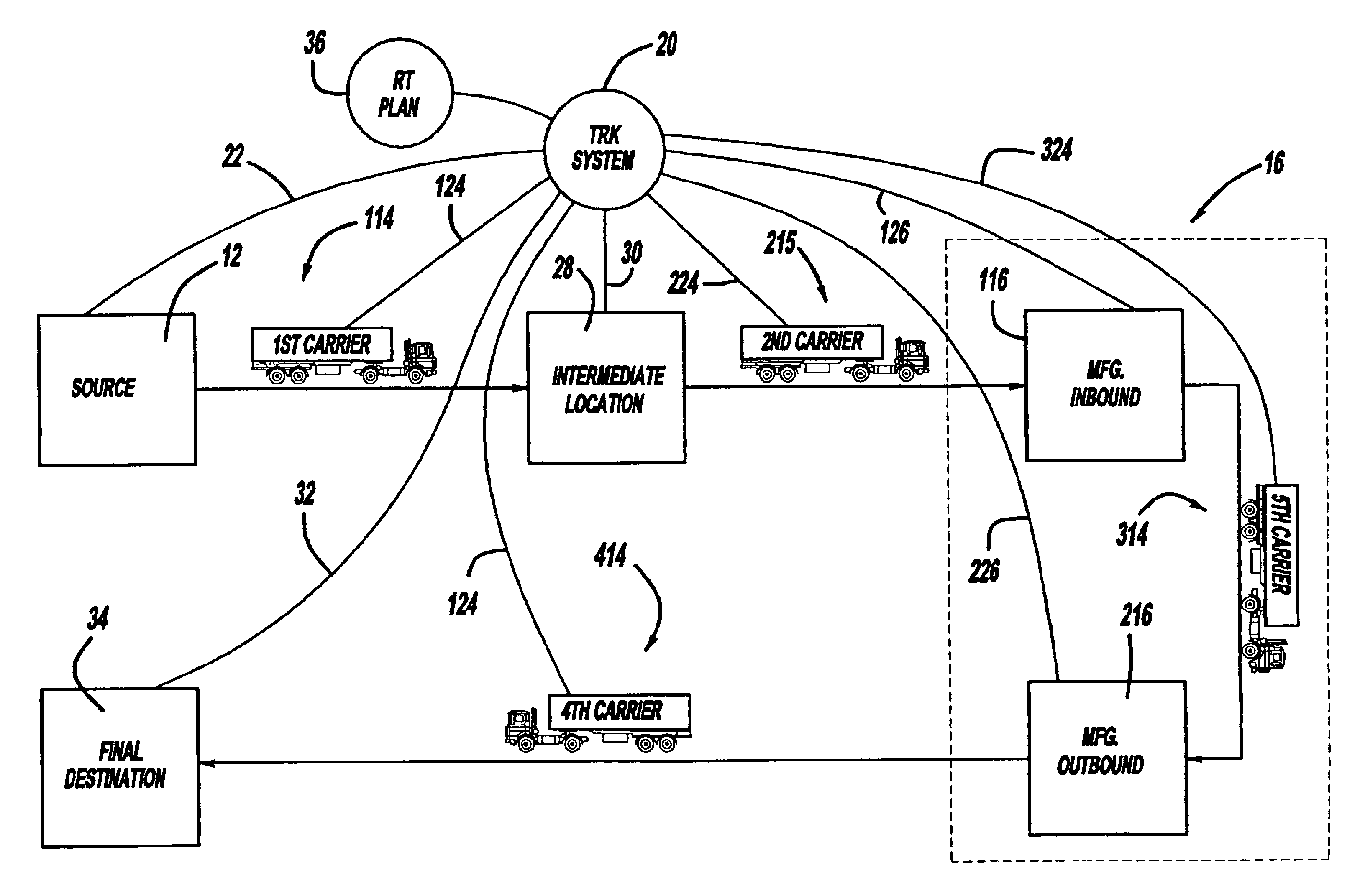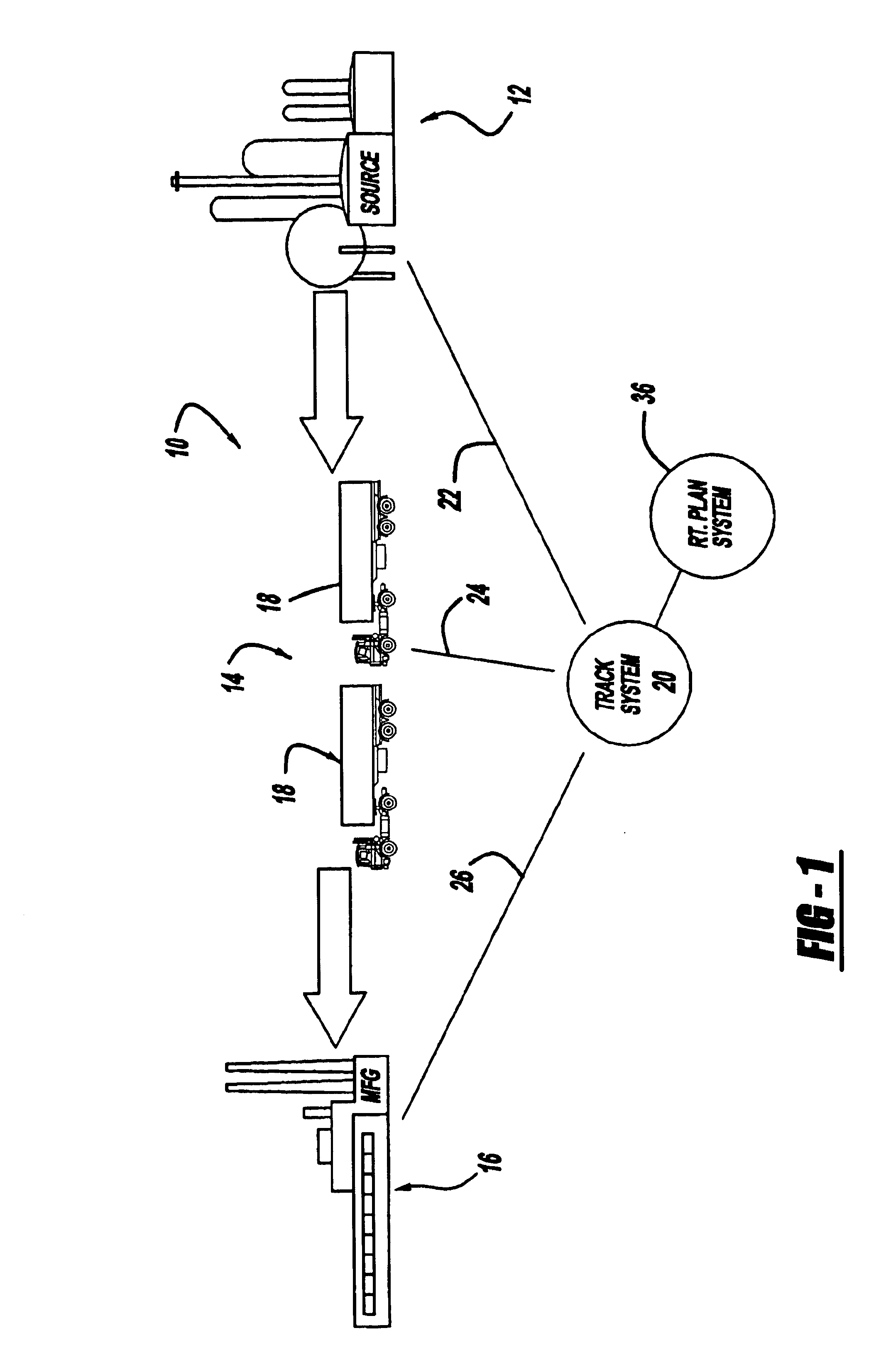Shipment tracking analysis and reporting system (STARS)
a tracking analysis and tracking system technology, applied in the field of tracking systems for materials, can solve the problems of increasing carrying costs, increasing overall manufacturing costs, and in part dependent on costs, and achieve accurate time estimates of delivery
- Summary
- Abstract
- Description
- Claims
- Application Information
AI Technical Summary
Benefits of technology
Problems solved by technology
Method used
Image
Examples
first embodiment
FIG. 1 illustrates a schematic view of a material tracking system 10 according to the present invention. Material tracking system 10 generally includes supplier 12, carrier 14, and manufacturer 16. Supplier 12 is a typical producer of components or raw material, hereinafter known as supplier goods, for use by manufacturer 16 to construct a final product. Such raw material or components could include, but are not limited to, iron ore for steel plants, accessories for automobile manufacturers or other typical supplier goods as is known in the art. However, supplier 12 could also include an intermediate location (as will be discussed) or the distributor of final components from a manufacturer. Such distributors of final components would include the shipment of a final product, such as an assembled automobile, to a sales location such as a dealer lot. Carrier 14 is a shipping company which employs specific shipping units 18 to move the supplier goods from one location to another. Shippi...
second embodiment
Referring now to FIG. 2, the present invention is shown and described. The embodiment depicted in FIG. 2 includes an intermediate location 28, manufacturer inbound 116, manufacturer outbound 216, and final destination 34. First carrier 114, second carrier 215, third carrier 314, and fourth carrier 414 provide shipping between each of these respective units. More specifically, first carrier 114 delivers supplier goods from supplier 12 to intermediate location 28. Second carrier 215 moves this material from intermediate location 28 to manufacturer inbound 116. From here, the manufacturer processes the supplier goods and moves it internally with third carrier 314 to manufacturer outbound 216. The final product is delivered by fourth carrier 414 from manufacturer outbound 216 to final destination 34.
Intermediate location 28 acts, in many respects, similar to supplier 12. Intermediate location 28 issues information, otherwise known as commodity information B, to tracking system 20 upon s...
PUM
 Login to View More
Login to View More Abstract
Description
Claims
Application Information
 Login to View More
Login to View More - R&D
- Intellectual Property
- Life Sciences
- Materials
- Tech Scout
- Unparalleled Data Quality
- Higher Quality Content
- 60% Fewer Hallucinations
Browse by: Latest US Patents, China's latest patents, Technical Efficacy Thesaurus, Application Domain, Technology Topic, Popular Technical Reports.
© 2025 PatSnap. All rights reserved.Legal|Privacy policy|Modern Slavery Act Transparency Statement|Sitemap|About US| Contact US: help@patsnap.com



